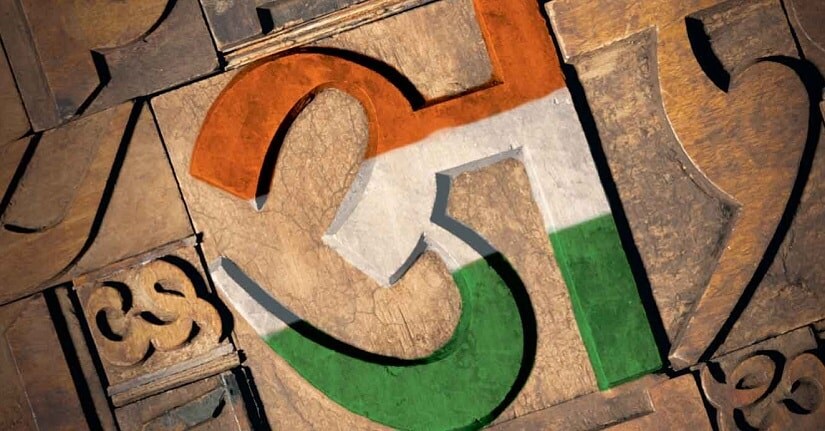As the shrill celebration of Hindi Diwas comes to a quiet end, it is useful to remember that Hindi, contrary to its projection as the timeless linguistic spirit of the Indian nation, has a history. That this is a fact often lost in celebration – although nobody, given the languishing state of Hindi literature and writers, quite knows what we are celebrating – attests the reality of Hindi as a national symbol with no presence, let alone appreciation. Language and nationalism, historically speaking, have always had a profoundly dovetailed intimacy. By Benedict Anderson’s authoritative interpretation for modern Europe, nation-states emerged as imagined communities by a processual cocktail, so to speak, of language, a print capitalism that proliferated it, and the nationalism whose consolidation the two actively fostered. [caption id=“attachment_7346371” align=“alignnone” width=“825”]  It is useful to remember that Hindi, contrary to its projection as the timeless linguistic spirit of the Indian nation, has a history. File Photo[/caption] In Europe this led to the creation of many nation-states, each shepherding a language to its national fruition; with the end of many ancien regimes in Europe ended also the reign of Latin. This was a model of visceral influence in the minds of men (such as Jawaharlal Nehru) at the commanding heights of the decolonising Indian nation-state, their post-Partition fears of fanning ‘regional aspirations’ notwithstanding. Only so could the idea of India as a ’nation of many nations’ emerge. Although the British did not, by and large, organise the provinces of their Indian empire by language, their assiduous efforts to know their subjects led to the creation of India’s regional languages in their current and modern forms. This is not to say that regional languages had no pre-colonial existence, but, as Sheldon Pollock has deftly shown, their forms were multifarious and never necessarily tied to territory. By British initiative, languages came to be codified, standardised by dictionaries, and ‘fixed’ to specific regions inhabited specific communities — in other words, colonialism made ‘regional’ languages regional. These became the bases upon which many of the dreaded ‘regional aspirations’ came to be made, culminating in the States Reorganisation Commission (1953) that sketched the boundaries of India’s states — and peoples — by language. The most vociferous of such aspirations was the Dravidian Movement for Tamil which, many forget, was also an anti-caste movement against Brahmin rule. Contestations over the region, however, have continued as India’s peoples have over the years foregrounded many other cleavages that language alone could not and cannot stifle. The state of Telangana was secured in 2014 citing sub-regional inequality; as this is written, Kashmir still sits in curfewed existence. The inalienable and uncomfortable truth is that neither in India nor in Europe has the problem written at the very heart of the nation-state been solved — the difficult impossibility of uniting a diverse people so long as the unity is only a veneer that stands for the domination of one people. Such is, properly speaking, clear in the historical course of Hindi. Among languages that are national emblems, there is perhaps no other language with a presence as tenuous to locate. Some link it to the Hindavi that carried Amir Khusrau’s passions, some take as its immediate predecessor the dialect of Khari Boli, and some, perhaps more comprehensively, tie it to both Hindavi and Khari Boli as well as a complicated substream of dialects and sub-languages like Awadhi and Braj bhasha. Hindi’s ties are so many because it was a language constructed much less organically than many of its vernacular competitors from other regions of the subcontinent. This was because Hindi was formed by the shrewd manipulation of the much more eclectic Hindustani, severing Persian cognates and elements that appeared too ‘Islamic’ — in much the same manner was the Urdu that became Pakistan’s crowning semiotic glory put together. Vasudha Dalmia has demonstrated how critical these exclusionary prerogatives were to the creation of Hindi and its early literary productions. In this process, both ‘Hindi’ and ‘Urdu’ were denied any substantial memory of their syncretic pasts when it was possible for several Hindu Khatris and Kayasthas in key administrative positions of the state to be great scholars and writers of Persian ecumene and for the Mughal prince Dara Shukoh to study and translate selections from Sanskrit Upanishadic literature. Haunted by the onerous weight of their wilful forgetting, both are, consequently, languages egregiously unrepresentative of the actual speech practices of their practitioners. Only very difficultly was Hindi knotted away from formal recognition as a national language, and only with great difficulty, in light of post-colonial experience, can Hindi be believed to be a mere official language. Despite its very recent provenance and certain plasticity, Hindi occupies a position of disproportionate influence and domination in the exercise of Indian nationhood – a faithless actuality that has inspired much chagrin and protest. That the theoretical equality of Hindi with other languages has not matched its practical domination over other languages is evidently the problem, but it is not a problem necessarily solved by universalising English. If the pursuit of unity and universality has failed, can the anarchy of diversity be given a go?
As the shrill celebration of Hindi Diwas comes to a quiet end, it is useful to remember that Hindi, contrary to its projection as the timeless linguistic spirit of the Indian nation, has a history.
Advertisement
End of Article


)
)
)
)
)
)
)
)
)



